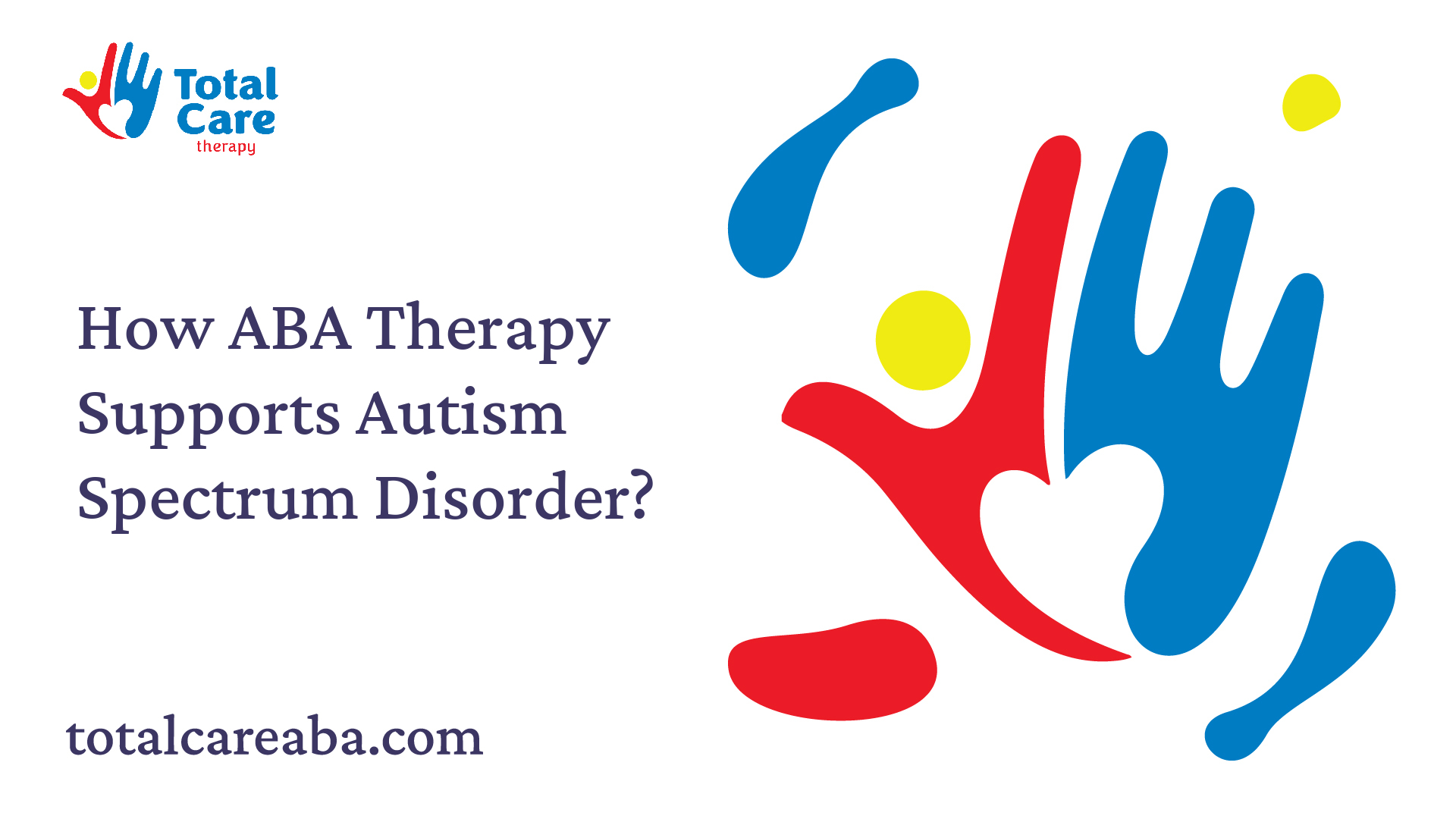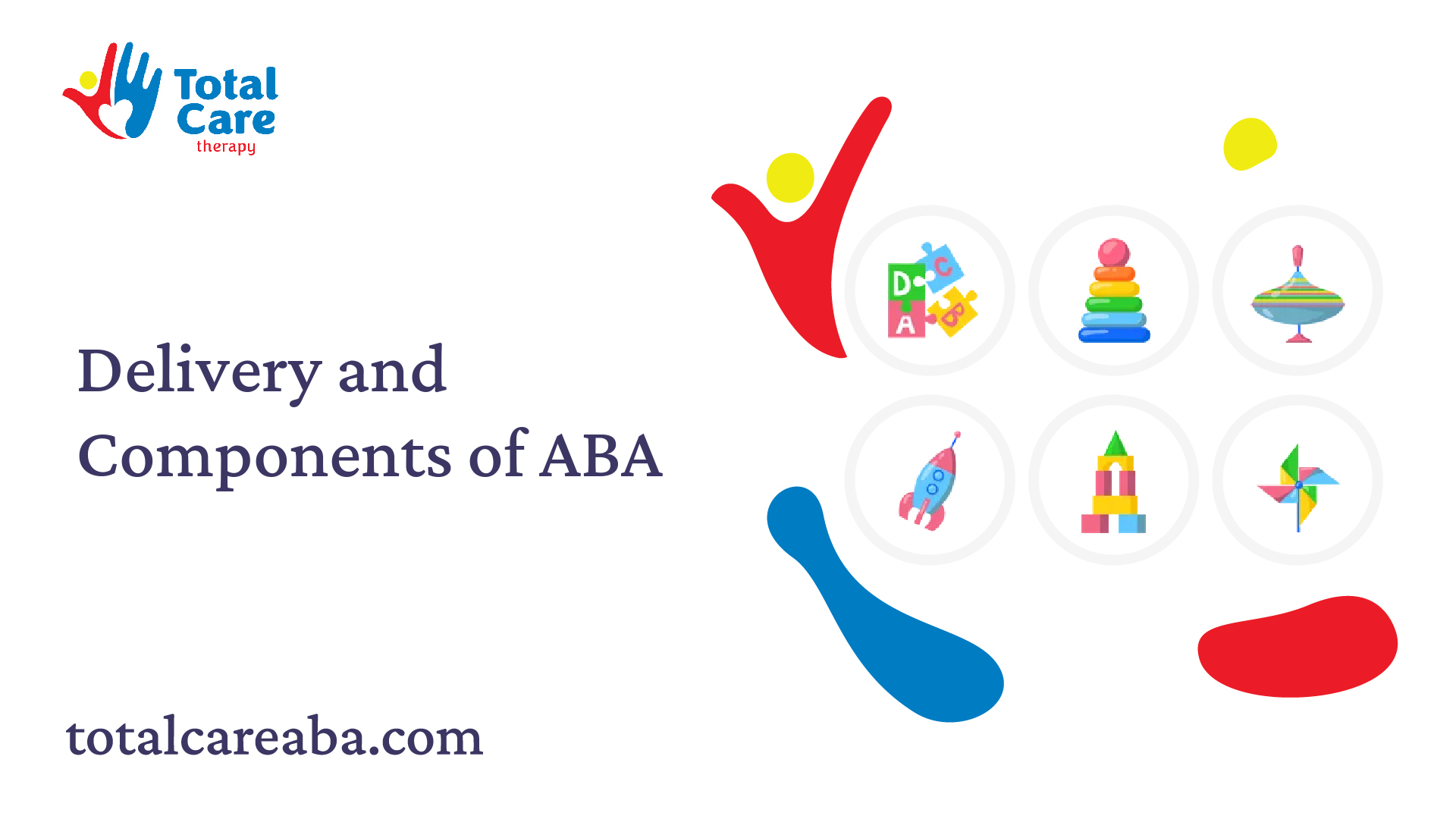How ABA Therapy Supports Autism Spectrum Disorder?
Discover how ABA therapy for autism spectrum disorder therapy helps children thrive in a supportive environment.
How ABA Therapy Supports Autism Spectrum Disorder?
Understanding ABA Therapy for ASD
Basics of ABA Therapy
Applied Behavior Analysis (ABA) therapy is designed to assist children diagnosed with autism spectrum disorder (ASD) in developing vital social and emotional skills. This approach employs structured one-on-one sessions grounded in learning theory principles, aiming to create meaningful changes in behavior. According to WebMD, ABA therapy focuses on improving social skills through positive reinforcement, while also addressing negative behaviors that may hinder a child's ability to adapt to various social situations.

ABA therapy operates on a scientific framework, emphasizing the relationship between a child's environment and their behavior. By understanding what triggers specific actions (antecedents) and what results from those actions (consequences), caregivers can better support positive behavior changes. This process is often illustrated using the ABC Model (Antecedent, Behavior, Consequence) [1].
The therapy typically involves intensive and long-term treatment, with studies showing that children who engage in ABA for 25 to 40 hours per week over one to three years can experience substantial improvements in both language and social skills [2]. Below is a summary of key features of ABA therapy:
FeatureDescriptionFocusSkill development in social and emotional areasMethodologyOne-on-one sessions based on learning principlesDurationOften 25 to 40 hours per week for 1-3 yearsTechniquesPositive reinforcement, addressing negative behaviors
Importance of ABA in Autism Care
ABA therapy is widely recognized as an effective approach for supporting individuals with Autism Spectrum Disorder. Its structured methodology not only enhances social skills but also facilitates behaviors necessary for engaging in daily activities and social interactions [1]. By providing targeted interventions that adapt to each child's unique needs, ABA equips them to navigate challenges they may encounter in typical environments.
The impact of ABA therapy extends beyond immediate behavior modification. As children acquire essential skills, it helps boost their confidence and independence. This can lead to improved relationships with peers and caregivers, ultimately fostering a sense of community and belonging. ABA therapy also paves the way for integration into educational and social settings, further enriching the child's developmental experience.
For more information on how ABA therapy integrates with other services, parents can explore ABA therapy for behavioral therapy services or check out ABA therapy for autism skill programs. These resources can provide additional insights into the comprehensive support available for children with autism through ABA therapy.

Delivery and Components of ABA
Understanding how Applied Behavior Analysis (ABA) therapy is delivered and its various components can help parents navigate this effective treatment for children with autism spectrum disorder.
Settings for ABA Therapy
ABA therapy can be conducted in a variety of environments, which allows for greater flexibility and comfort for families. Common settings include:
ABA therapy settings not only enhance the learning opportunities for children but also allow practitioners to utilize different approaches suited to individual needs.
SettingAdvantagesHomeFamiliar environment; everyday learning situationsClinicsProfessional resources; structured therapy approachSchoolsIntegration into learning; support in social skillsCommunityReal-world practice; enhances social interactions
ABA Therapy Team Roles
An effective ABA therapy program involves a dedicated team of professionals who work collaboratively to meet the child's needs. Key roles in this team include:
The involvement and commitment of each team member contribute significantly to the effectiveness of ABA therapy for children with autism. Approximately two-thirds of children referred for ABA remain in services for 12 months, indicating the importance of ongoing support [5]. Ensuring that families understand the roles on their child's ABA team can help optimize treatment outcomes.
This collaborative approach enhances the implementation of strategies that are crucial for achieving meaningful progress for children with autism. For further insights on ABA therapy, parents can explore aba therapy for behavioral therapy programs and aba therapy and autism skill programs.
Effectiveness and Benefits of ABA
Scientific Backing of ABA
ABA therapy has garnered substantial scientific support regarding its effectiveness for children diagnosed with autism spectrum disorder (ASD). Research indicates that approximately one in 54 children in the US is affected by ASD, emphasizing the need for effective interventions. Over 20 studies have confirmed that intensive and long-term therapy utilizing ABA principles can lead to remarkable improvements across various dimensions.
Study FindingsResultIntellectual Functioning47% of children in ABA treatment reached normal intellectual and educational functioning; only 2% in a control group did. (PubMed)Language DevelopmentLong-term ABA interventions resulted in positive outcomes in language acquisition. (PubMed)Daily Living SkillsChildren receiving comprehensive ABA showed significant improvements in daily living skills. (PubMed)Social FunctioningABA therapy contributed to enhancements in social skills and interactions. (PubMed)
The systematic reviews show that ABA interventions are associated with medium to large effects regarding language skills, intellectual functioning, and overall social capabilities. Reinforcement strategies are a critical component of ABA, enhancing positive behaviors through various techniques to promote desired actions.
Outcomes of ABA Therapy
The benefits of ABA therapy are wide-ranging and multifaceted. Improvements have been documented across multiple outcome measures, including cognitive abilities, communication, social interactions, and the management of challenging behaviors.
Outcome MeasureFindingsCognitive SkillsEnhancements in cognitive capabilities have been consistently reported.Language SkillsDocumented improvements in communication abilities.Social/Communication SkillsSignificant progress in social interactions and communication patterns.Problem Behavior ManagementReduction in undesirable behaviors through effective interventions.Adaptive BehaviorGains in daily living skills, allowing for increased independence.Emotional and Behavioral SymptomsPositive impacts on behavior regulation and emotional coping strategies.Autism SymptomsReduction in general autism-related symptoms.
While improvements were reported across these measures, it's important to note that quality of life (QoL) assessments have not been a focal point in many studies [6]. These outcomes emphasize the importance of ABA therapy for autism spectrum disorder therapy as a pivotal tool for aiding children in their development and everyday functioning.
Criticisms and Concerns
Controversies Surrounding ABA
ABA therapy has garnered its share of criticism, primarily centered around its methods and underlying philosophy. Critics have often compared ABA therapy to animal training, questioning whether it is ethical to implement a system of rewards and consequences on children to alter their behavior. Some argue that children should not be subjected to such a structured approach concerning social interactions, as it may disregard the individuality of each child.
Additionally, autism rights and neurodiversity advocates have raised concerns about various ABA-based interventions. These concerns are multifaceted, stemming from historical practices associated with behavior analysis to the current goals and techniques utilized. There is apprehension that these methods may not effectively resonate with the needs and experiences of individuals diagnosed with Autism Spectrum Disorder (ASD).
Another specific area of contention is the treatment of stereotypic behaviors, commonly known as "stimming." Critics claim that behavior analysts may lack an understanding of why individuals engage in such behaviors. Although these practices are often criticized, research has highlighted that addressing stereotypic behavior can lead to enhanced outcomes and positive changes in other behavioral aspects for individuals diagnosed with ASD.
Addressing Criticisms Effectively
While criticisms of ABA therapy exist, it remains essential to address these concerns constructively. Therapists and practitioners can emphasize a more personalized approach to ABA therapy that respects the unique needs and preferences of each child. Listening to the voices of parents and autistic individuals can foster a more inclusive and effective therapeutic environment.
When discussing stereotypic behaviors, behavior analysts can employ techniques that ensure these habits are understood in context. By explaining the reasons behind stimming and being open to families' perspectives, practitioners can create more tolerant and comprehensive interventions. It's crucial to focus on functional outcomes rather than merely suppressing these behaviors.
To create a balanced approach in ABA therapy, practitioners can collaborate with autism rights advocates and families to establish shared goals that align more closely with the aspirations and values of individuals with ASD. Open dialogue, feedback, and evolution in therapy methodologies can lead to improved perceptions of ABA and enhance its efficacy in supporting diverse autistic individuals. For further information on specialized interventions, refer to our articles on aba therapy for behavioral therapy programs and aba therapy for behavioral therapy services.
Accessibility and Insurance Coverage
Accessing ABA therapy services for autism spectrum disorder is a vital consideration for many parents. Understanding how and where these services can be obtained, along with the insurance coverage options available, can help families make informed choices.
Availability of ABA Services
ABA therapy is versatile and can be delivered in various settings to suit individual needs. Services may take place at home, in clinics, schools, or even within the community. Programs typically include support from Board Certified Behavior Analysts (BCBAs) and Registered Behavior Technicians (RBTs) to facilitate effective interventions.
SettingDescriptionHomePersonalized therapy in a familiar environment, focusing on daily routines.ClinicsStructured sessions in a professional setting with specialized resources.SchoolsIntegration of therapy within the educational context to enhance learning.CommunitySkills are taught in social settings, promoting real-world application.
Insurance Options for ABA
Many types of private health insurance are required to cover ABA services. Additionally, Medicaid plans are mandated to cover medically necessary treatments for children under the age of 21, which includes ABA if prescribed by a physician. Different plans might have various coverage guidelines, including:
Insurance TypeCoveragePrivate InsuranceOften covers ABA, contingent on policy terms.MedicaidMust cover medically necessary ABA services for eligible children.State-Specific ProgramsVaries by state; some offer additional support or benefits for ABA therapy.
For parents navigating the complexities of insurance options, reviewing specific policies and discussing coverage directly with insurance providers is often beneficial. Effective advocacy can also assist in addressing any discrepancies in coverage for ABA services, especially for behavioral therapy programs [8]. Additionally, many families find value in exploring resources for aba therapy for developmental therapy centers and aba therapy and autism skill programs to enhance their child's support network.
Future of ABA Therapy
As awareness and understanding of Autism Spectrum Disorder (ASD) evolve, so too does Applied Behavior Analysis (ABA) therapy. Parents of children diagnosed with autism can look forward to exciting developments in ABA practices and research.
Evolving ABA Practices
The field of ABA therapy is continuously adapting to better meet the needs of individuals diagnosed with ASD. There is an emphasis on implementing evidence-based practices tailored specifically to children. Studies have shown that various interventions, such as shaping, discrete trial teaching, pivotal response training, and group instruction, have yielded positive outcomes. These methodologies are regarded as some of the most effective for treating autism-related challenges. According to research, ABA-based interventions are now recognized for their effectiveness, fostering improved communication and social skills in children with ASD.
Here is a summary of evolving practices in ABA therapy:
PracticeDescriptionShapingGradually reinforces behaviors to reach a desired goalDiscrete Trial TeachingBreaks down skills into smaller, teachable componentsPivotal Response TrainingFocuses on critical skills that impact other behaviorsGroup InstructionTeaches social skills through interactive, group settings
Research and Innovation in ABA
Ongoing research is driving innovation in ABA therapy, reinforcing its status as a robust intervention for individuals diagnosed with ASD. A growing body of literature supports ABA-informed methods as evidence-based practices in the field. Multiple organizations, including Autism Speaks and the Association for Behavior Analysis International, endorse these interventions as effective solutions for various behavioral challenges.
Innovative technologies and techniques are being incorporated into treatment plans for enhanced outcomes. Virtual reality programs, mobile applications for tracking progress, and telehealth services are just a few examples of how ABA therapy is evolving. These advancements provide more flexibility in how therapy is delivered, ensuring that it remains accessible to families.
To learn more about specific applications of ABA therapy, parents can explore our resources on ABA therapy for behavioral therapy programs and ABA therapy for autism skill programs. As the landscape of ABA continues to change, parents can be hopeful about the future of support available for their children.
References
[2]:
[3]:
[4]:
[5]:
[6]:
[7]:
[8]: /aba-therapy-for-behavioral-therapy-programs








